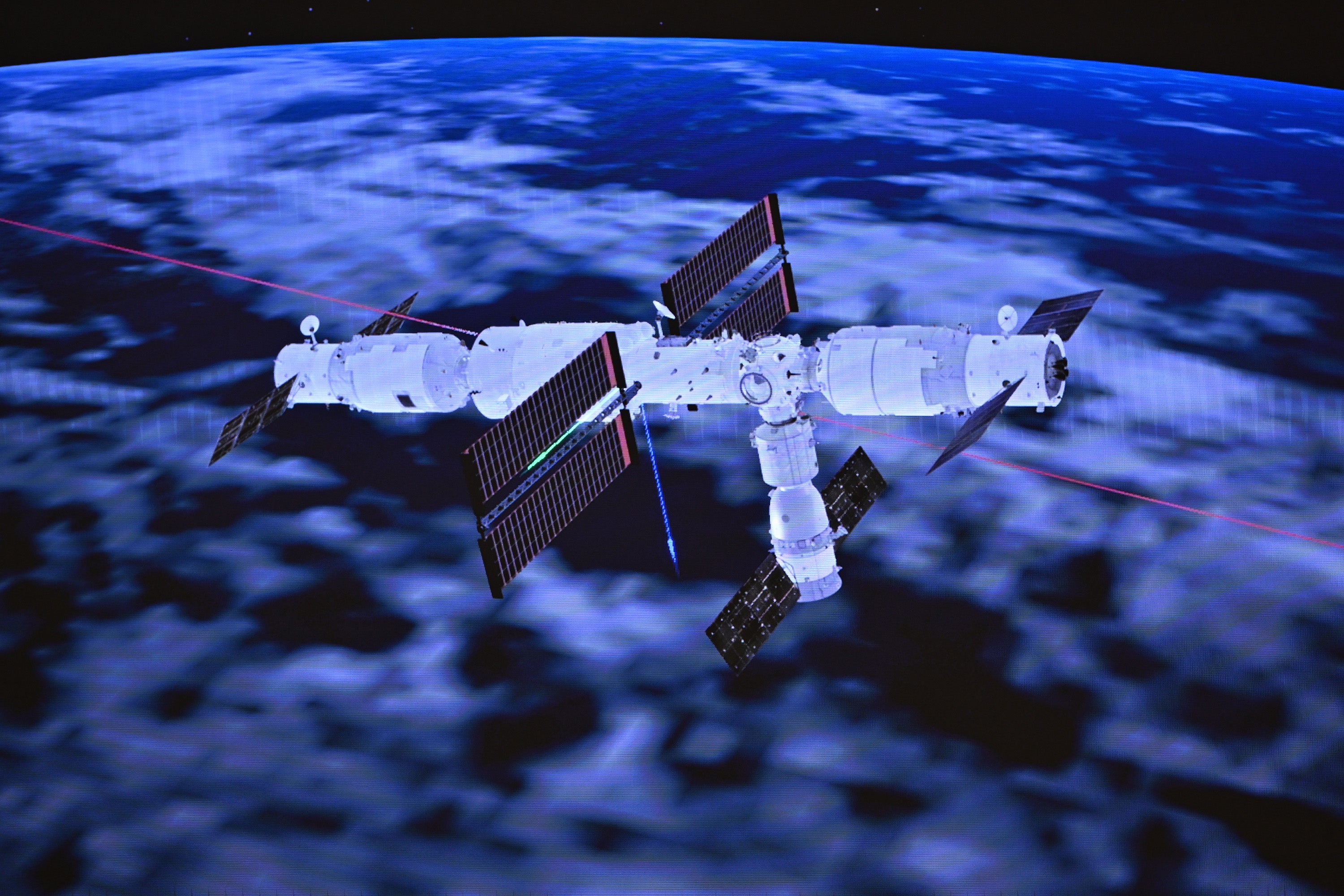Astronauts sent on mission to complete space station
THE ARTICLES ON THESE PAGES ARE PRODUCED BY CHINA DAILY, WHICH TAKES SOLE RESPONSIBILITY FOR THE CONTENTS

The crew of the Shenzhou XIV mission, China’s ninth manned spaceflight, arrived at the Tiangong space station on June 5, several hours after their spacecraft was launched from the Jiuquan Satellite Launch Centre in the northwestern China’s Gobi Desert.
The three astronauts, Chen Dong, Liu Yang and Cai Xuzhe, entered the space station’s core module, Tianhe.
They are to stay in the outpost, orbiting 249 miles above the Earth, for six months to complete the assembly in space of the colossal station.
When their mission is completed, around the end of this year, the Tiangong space station will have become fully operational.
The three astronauts’ mission has inaugurated a 10-year period in which, barring unforeseen circumstances, Chinese astronauts will be in space every day.
Shenzhou XIV is the sixth spacecraft to visit Tiangong and the third crewed ship to transport astronauts to the orbiting outpost.
Tiangong now consists of four sections: Tianhe, the core module; the Shenzhou XIV craft; and the Tianzhou 3 and Tianzhou 4 cargo ships.
The Shenzhou XIV crew will work with ground controllers to connect the Wentian and Mengtian space laboratories with the Tianhe module and then use the robotic arm to move the laboratories into their permanent position, said Lin Xiqiang, deputy head of China Manned Space Agency.
Wentian, the station’s first laboratory component, will be launched in July from the Wenchang Space Launch Centre in Hainan province. Mengtian, the second laboratory component, will be launched in October.
After they are connected with Tiangong, the station will form a T-shaped structure.
The astronauts will also have the job of installing and configuring equipment, conducting scientific experiments and technological demonstrations, and maintaining routine operations on Tiangong, Lin said.
They will engage in two to three spacewalks and give science lectures to students, he said.
In the second half of the mission, the Tianzhou 5 cargo craft and Shenzhou XV crew are scheduled to arrive at the massive space station.
The Shenzhou XIV and XV crews will meet inside Tiangong and work together for a short period before Chen’s crew returns to Earth in December, the official said.
Previously, the Shenzhou XII and XIII three-member crews lived inside Tiangong. The Shenzhou XIII crew returned to Earth in mid-April.
In early May the Tianzhou 4 cargo spacecraft was launched, carrying nearly 6 metric tonnes of propellants and materials to the Tiangong station.
Pang Zhihao, a retired analyst of the China Academy of Space Technology and an independent spaceflight researcher, said the Shenzhou XIV crew’s tasks are more demanding and challenging than those handled by the Shenzhou XII and XIII crews.

“They will not only need to monitor the docking of the Tianhe module and the two space labs, but are also responsible for assembling and configuring many instruments inside the labs,” he said.
“What’s more, it will be the first time that large components, namely the two space laboratories, will be linked with the core module. There are likely to be technical uncertainties that the astronauts may have to deal with.”
Astronaut Chen Dong, the mission commander, said before the launch that his crew will make full use of the Tiangong station to conduct sophisticated experiments and tests to advance science and technology. The scientific and technological achievements that will emerge from Tiangong will benefit people worldwide, he said.
The Tiangong spacecraft is expected to operate for up to 15 years and is scheduled to serve as a national scientific platform, space officials have said. It will be open to foreign astronauts.
Previously published on Chinadaily.com.cn
